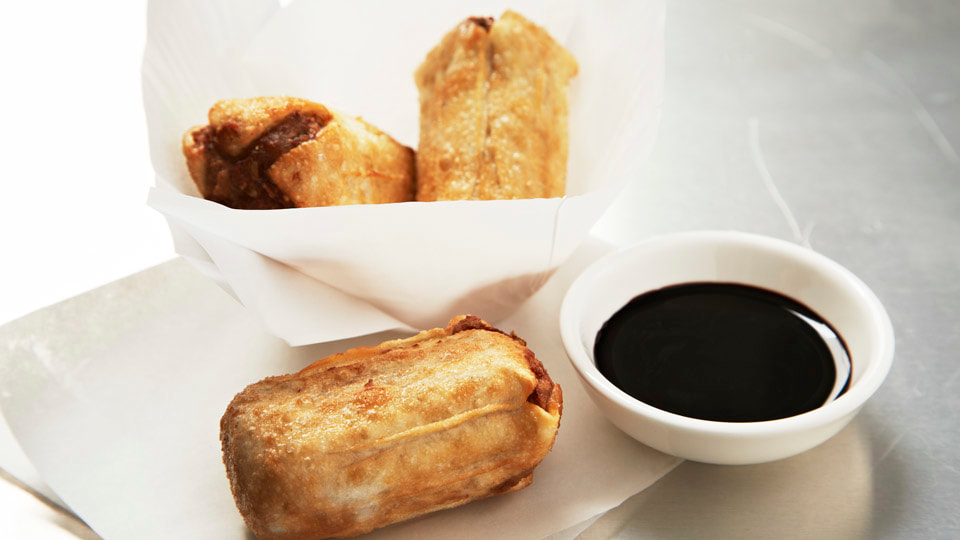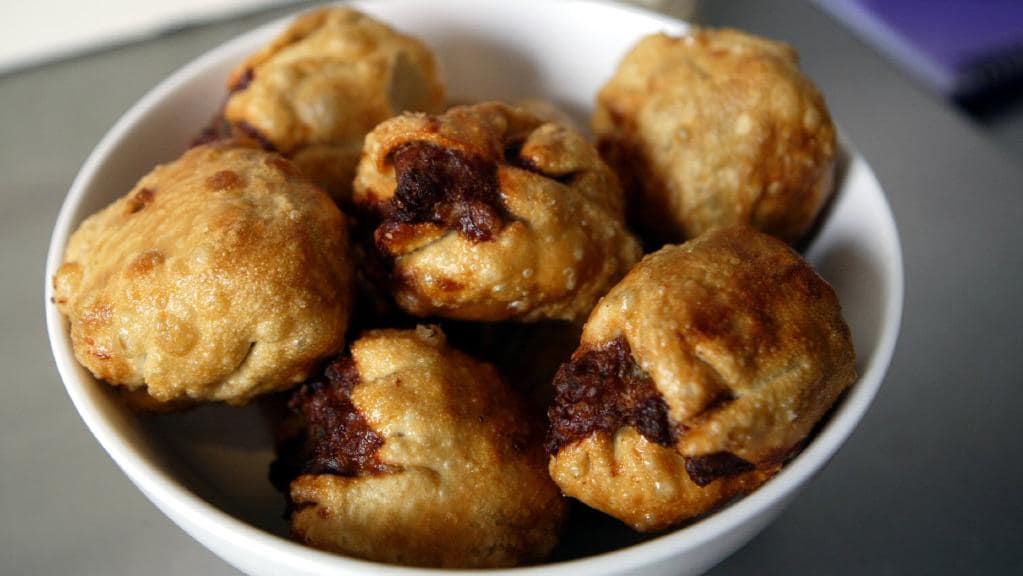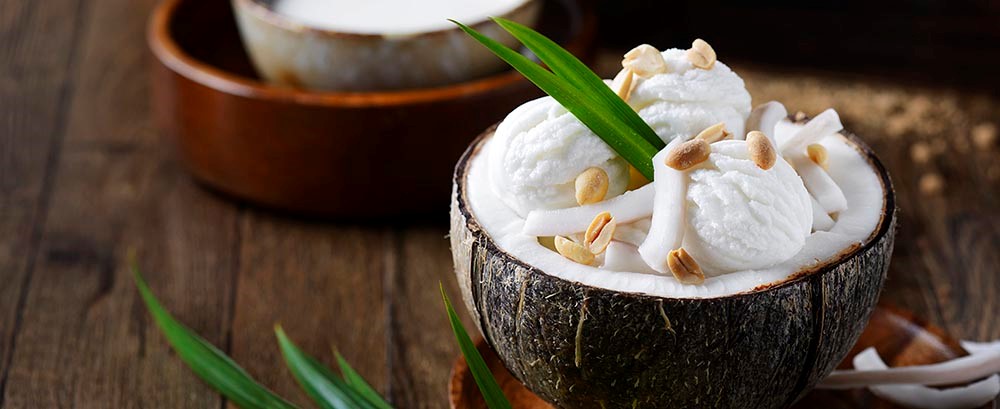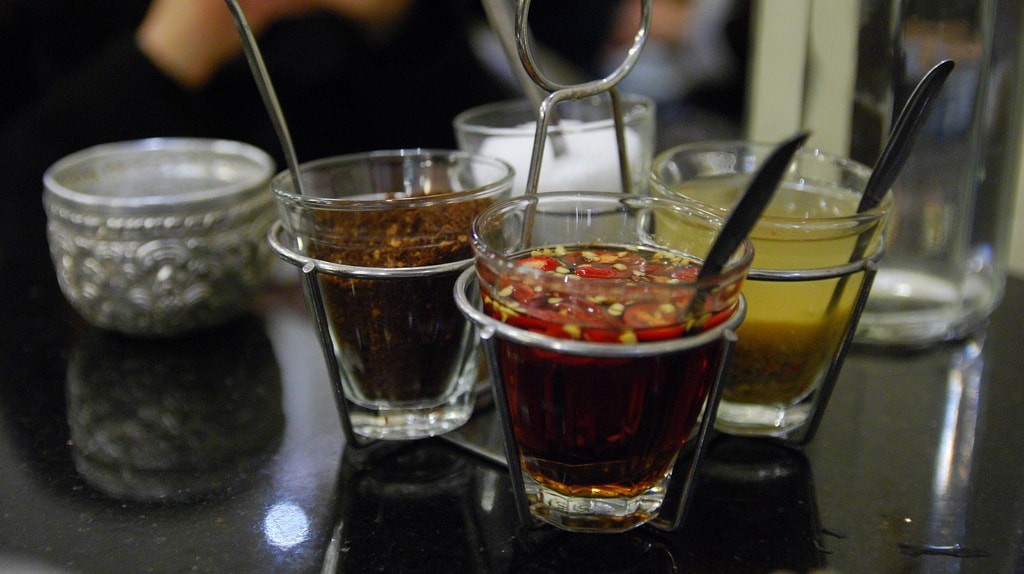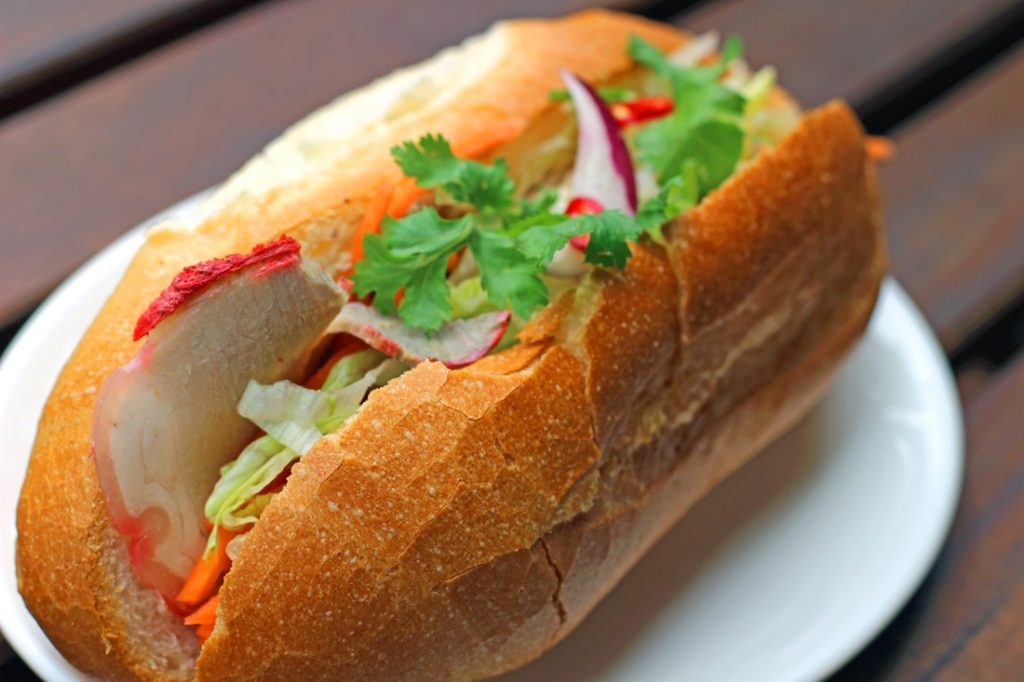The dim sim is a unique Australian take on the Chinese dumpling. Known colloquially as the “dimmy” to proud Australians everywhere, the Aussie dim sim is about twice as big and thrice as ugly as your standard Chinese variety known elsewhere. That beloved mix of pork and mystery meat, cabbage and flavourings is encased in a thick dumpling wrapper which is steamed or fried, then doused in a vigorous splash of soy sauce which must reliably leak through the brown paper bag from which it is eaten and drip lazily down your arm as you eat and walk. The dimmy is not to be eaten gracefully – Greedy Diva
A dim sim is a Chinese-inspired meat and vegetable dumpling-style snack food, that has been popularised in Australia. The snack food (dubbed in Australian slang as a “dimmy’) consists of minced meat, cabbage, and seasoning, encased in a wrapper similar to that of a traditional shumai dumpling. They can be served deep-fried or steamed and are commonly dressed or dipped in soy sauce. They are either served in a common rectangular shape, or in a slightly larger circular shape (about half the size of a fist would be a good gauge).
The long fame and ubiquity of the dim sim is an example of the characteristic multiculturalism in Australia, particularly the city of Melbourne. During the Victorian Gold Rush in the 1850’s, Chinese immigrants flocked the city of Melbourne, stayed and established their own communities back then.
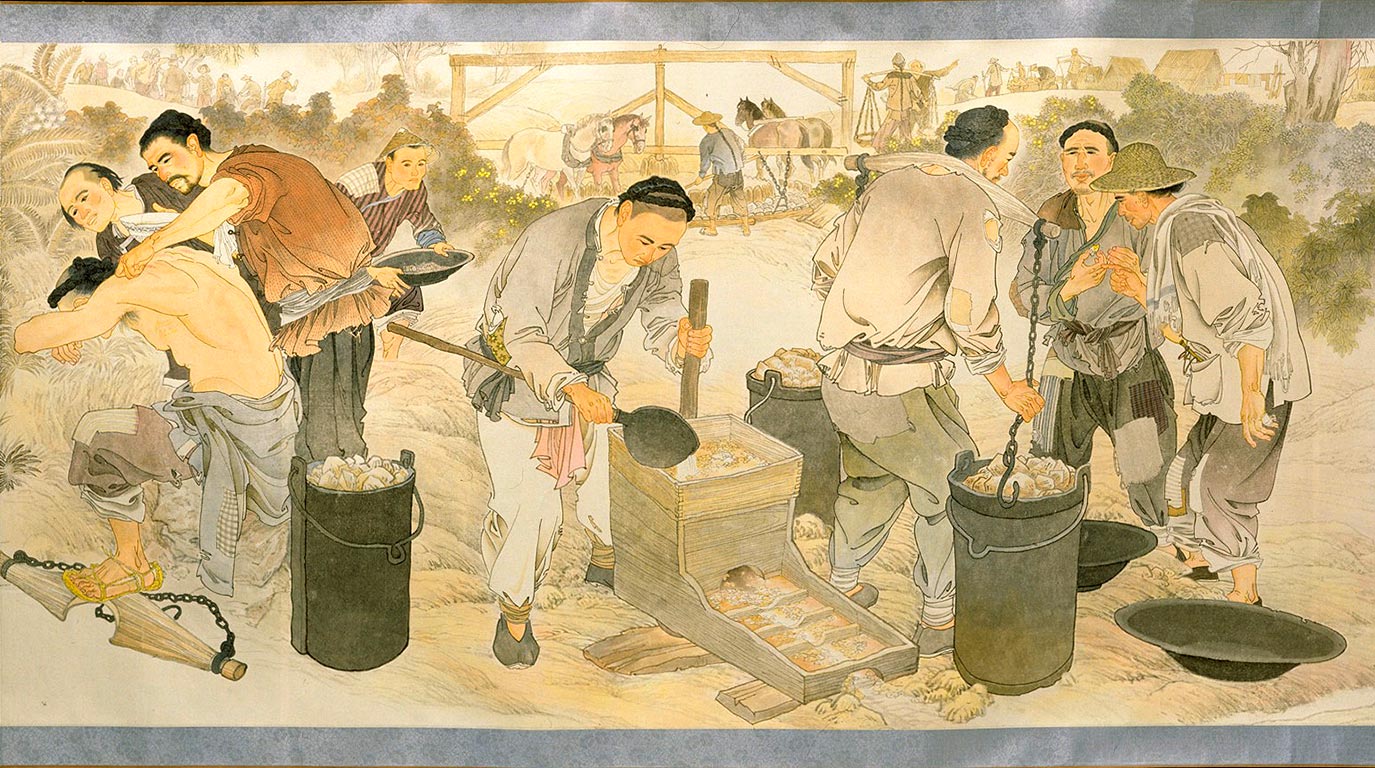
Legend has it that the dim sim was originally developed in 1945 by William Wing Young (father of Elizabeth Chong, a food writer and educator on Chinese cuisine). Ms Chong said her father noticed that Australians visiting his restaurant, Wing Lee in Melbourne’s Chinatown, particularly enjoyed the tiny pork mince dim sum dumplings called shumai. Sensing a business opportunity, Mr Wing Young adapted the recipe to create a commercial version and produced them in a factory.
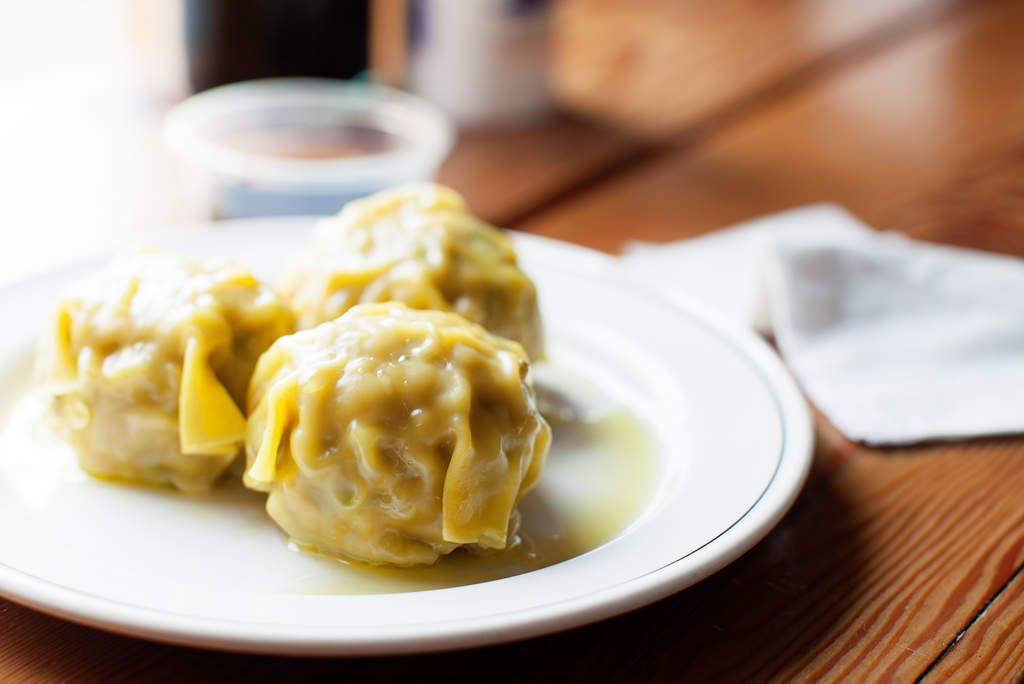
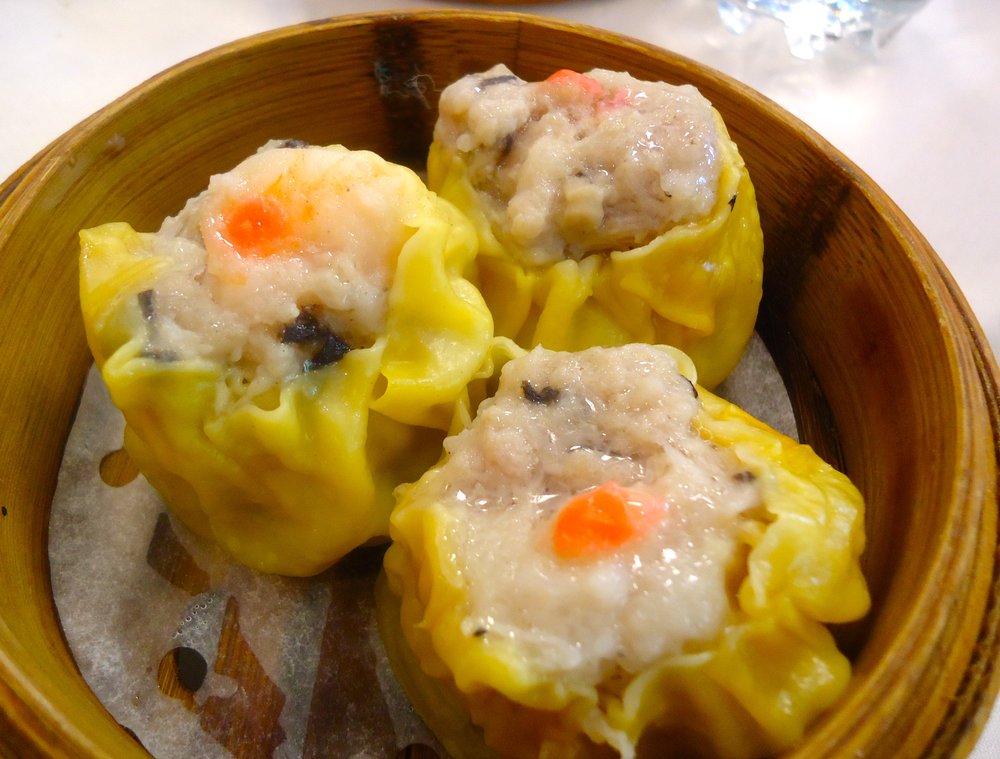
TUL: Wikipedia states that alternative names can be ‘Dimmie’, ‘Dimrock’, or ‘Dimmo’. Are any names other than ‘Dimmie’ acceptable?
Ross: I think coming up with lots of different names for something so simple just over-complicates things. But I have also heard them being referred to as ‘cat coffins’ and ‘cat sacks’.
– The Urban List
“Thick-skinned, resourceful and with a suspicious background, the dim sim captures the spirit of what it is to be Australian,” Mr Lewry – The Dim Sim Salute
